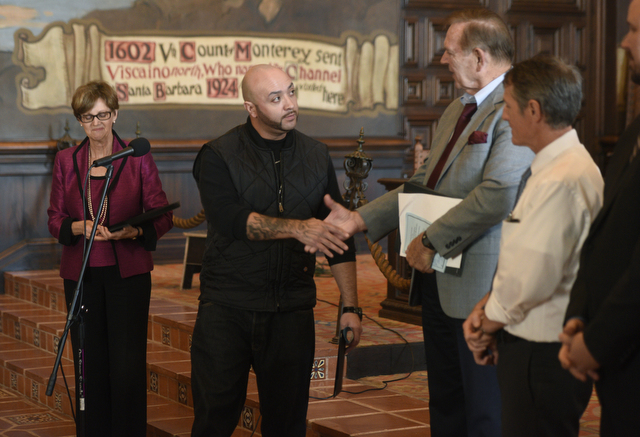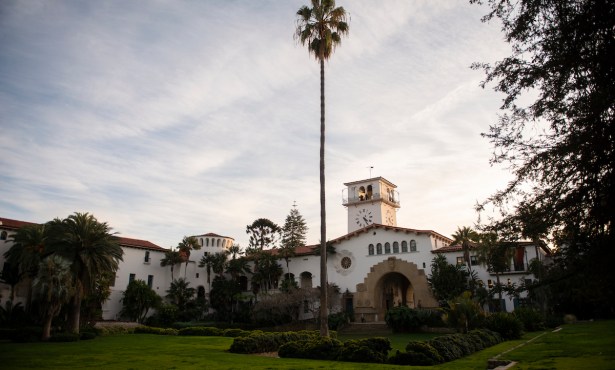Drug Court Graduates Celebrate Year of Sobriety
Many Thank the Nonjudgmental Approach of Project Recovery Program

This Monday, 27 recovering drug addicts and alcoholics celebrated 12 months of court-supervised sobriety with hearty handshakes from judges Thomas Adams and Jean Dandona, who presided over their graduation from one of eight “drug court” diversion programs. Many of the graduates — who entered their respective programs rather than face criminal prosecution — sang the praises of Marcel Meier, manager for Project Recovery.
One graduate — a self-described “46-year-old Montecito Mommy” — said she achieved a year’s worth of sobriety thanks to Project Recovery’s nonjudgmental and accepting approach. She’d tried Betty Ford for 28 days back in 2006 after a wine-fueled car crash, but to no avail. A taste for Vicodin led to addiction, and two years ago she was back in court on felony charges for failing to return a rental car. Last year, she was charged with felony embezzlement after talking a couple into writing her checks for $5,300 as a deposit on an apartment she did not own. When prosecuting attorney Brian Cota allowed her to sign up for a diversion program, the Substance Abuse Treatment Court, she jumped at the chance. If she could complete 12 months of the program without a hitch, her criminal charges would be expunged. “No conviction,” she exclaimed.
Program leader Meier said about 120 people graduate from the eight programs a year and about 30 drop out or are kicked out. “We give them a lot of chances,” he said. North County addicts favor methamphetamines while their South County counterparts — who tend to be older and whiter, start drug abuse sooner, and are arrested later on — favor opiates such as heroin and Vicodin. Seventy-five percent of drug-court enrollees on the South Coast graduate while only 33 percent of their North County peers do. A follow-up study on the efficacy of drug courts concluded that those who graduated from them tended to have lower re-offense rates.



